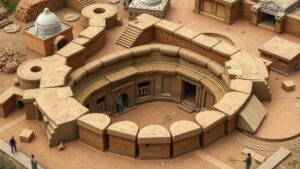Using Modern Cartography to Cross-Reference Treasure Maps and Locations
Using Modern Cartography to Cross-Reference Treasure Maps and Locations
The allure of treasure hunting has captivated adventurers for centuries, often fueled by the promise of riches hidden in uncharted lands. As the discipline of cartography has evolved, so too have the methods for analyzing and interpreting treasure maps. This article explores how modern cartography enhances the effectiveness of treasure hunting by cross-referencing historical maps with contemporary geographic data.
The Evolution of Cartography
Cartography has transitioned from rudimentary maps drawn on stone tablets to sophisticated software that integrates various data layers. Early explorers often relied on hand-drawn maps that were prone to inaccuracies. Today, Geographic Information Systems (GIS) serve as powerful tools enabling the analysis of geospatial data. According to a report from the American Society for Photogrammetry and Remote Sensing, the GIS market was valued at approximately $8 billion in 2020 and is expected to grow at a rate of 10.9% annually through 2027.
Understanding Treasure Maps
Treasure maps often emerge from historical references, storytelling, or folklore. e maps can range from detailed illustrations to vague sketches that suggest the presence of treasure. A notable example includes the legendary map of Captain Kidd, a notorious pirate, which allegedly indicates the location of his buried treasure in the Caribbean.
While intriguing, these maps pose significant challenges in terms of interpretation. Many maps do not adhere to modern cartographic principles, leading to potential misreadings. To navigate this complexity, modern cartography invites a methodical approach to cross-referencing historical maps with current geographic information.
Modern Techniques in Cross-Referencing
Cross-referencing treasure maps with modern cartography requires several key techniques:
- GIS Analysis: GIS technology allows for layering different data sets, including historical maps, satellite imagery, and topographic information. By importing a treasure map into GIS software, treasure hunters can align it with contemporary geographical features, aiding in the identification of potential treasure sites.
- Remote Sensing: This involves acquiring data from aerial or satellite imagery. Remote sensing can uncover geographical changes over time, helping to assess whether a location has remained stable or has been modified by human activity.
- Geocoding: This technique uses geographic coordinates to pinpoint specific locations on a map. When geocoding historical treasure map references, one can verify their accuracy against modern geographic points.
Case Study: The Search for the Lost Treasure of the Flor de la Mar
The Flor de la Mar was a Portuguese ship that sank off the coast of Malaysia in 1511, carrying a substantial treasure. Modern treasure hunters have attempted to locate the ship using advanced cartographic techniques. By digitizing historical maps of the area and overlaying them with modern sonar data, teams have been able to narrow down the search area significantly.
Using GIS, researchers cross-referenced the ships last known coordinates, environmental data, and mapping of underwater features to create a comprehensive search model. This approach not only underscores the importance of modern technology in treasure hunting but also illustrates the potential for future discoveries.
Challenges in Using Modern Cartography
Despite its advantages, cross-referencing treasure maps with modern cartography is not without challenges:
- Data Accuracy: Historical maps can be inaccurate or based on flawed assumptions. Any discrepancies must be accounted for when using them as a reference point.
- Interpretative Variability: The subjective interpretation of symbols and features on historical maps can lead to conflicting conclusions about potential treasure locations.
- Legal and Ethical Considerations: Many countries have laws protecting cultural heritage sites, which may restrict treasure hunting practices. It is vital to ensure compliance with local regulations.
Actionable Takeaways
For those interested in utilizing modern cartography to assist in the search for treasure, consider the following steps:
- Study the applicable historical context and gather all available treasure maps relevant to your search area.
- Leverage GIS tools to digitize and analyze these maps alongside contemporary geographic data.
- Use remote sensing technology to explore the terrain and assess any significant alterations over time.
- Engage with local authorities and historical societies to ensure adherence to legal requirements and ethical practices.
Conclusion
The integration of modern cartography into the search for treasure enhances the methodologies by providing rigorous analytical frameworks. By cross-referencing historical maps with contemporary geographic data, treasure hunters can better navigate the complexities of locating long-lost riches. While challenges remain, the tools available today present opportunities for significant discoveries in the pursuit of adventure and knowledge.


